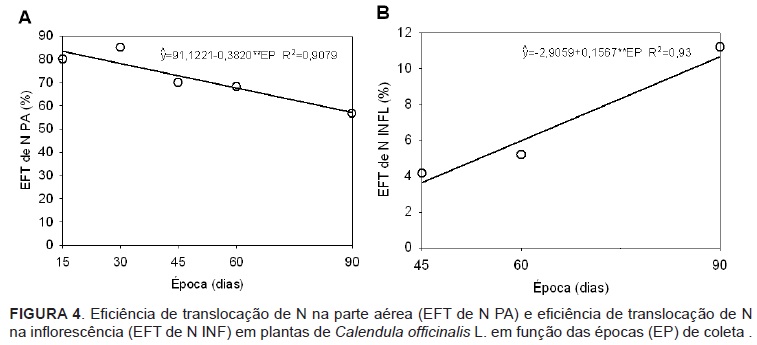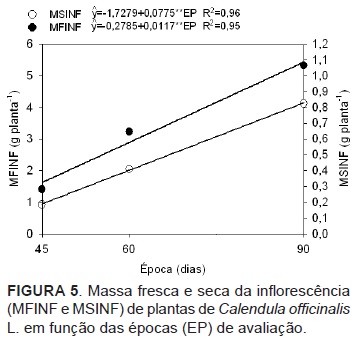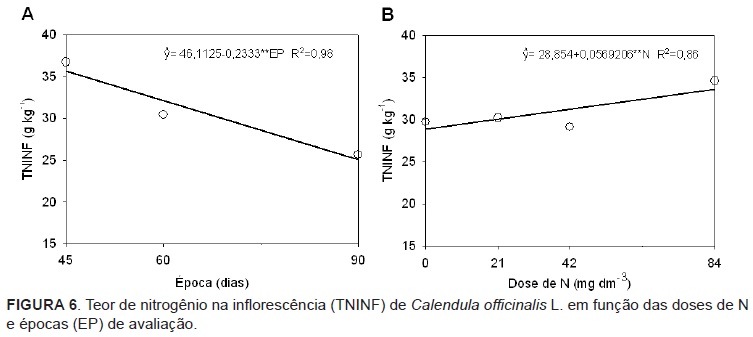The aim of this study was to evaluate the effect of both the application of different nitrogen levels on the soil and the harvest periods on nitrogen nutritional efficiency and biomass production in Calendula officinalis L. (Asteraceae) under greenhouse conditions. The employed substrate was 0-20cm layer of Oxisol. Experimental design was completely randomized, with four replicates. Treatments consisted of four N levels (0, 21, 42 and 84 mg dm-3) and five harvest periods (15, 30, 45, 60 and 90 days after transplanting). N levels in Calendula officinalis inflorescences reduced with the harvest periods, and such a reduction was probably due to the lower efficiency of absorption of this element by the plant and to the lower N translocation to inflorescences. We can conclude that the evaluation periods influenced the response of plants to uptake efficiency (UE), and the maximal UE for N was found at 51 days after transplanting of seedlings. There was an increase in N translocation from the shoot (leaves and stems) to inflorescences, which has as consequence N reduction in the shoot. Calendula officinalis biomass production increased with the harvest periods and with the increase in the N levels applied on the soil. N nutritional efficiency was influenced by both the evaluation periods and the N levels present on the soil.
Mineral nutrition; nitrogen fertilization; medicinal plants











